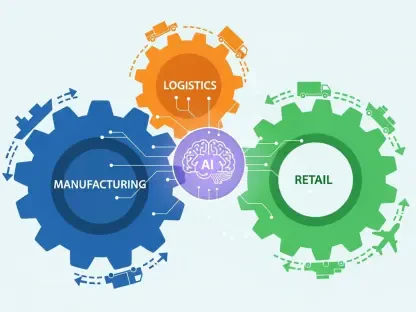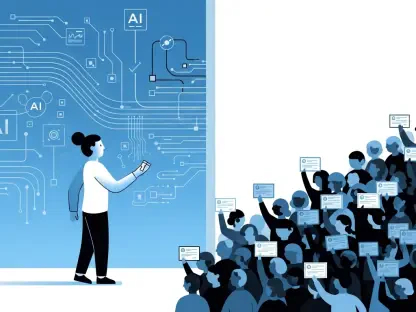In an era where artificial intelligence is rapidly transforming industries, the legal profession stands at a critical juncture, grappling with both unprecedented opportunities and complex ethical dilemmas that challenge its very foundation. Molly Swanson, a recent Rhodes Scholar and law graduate from Bond University, has emerged as a compelling voice in this debate, advocating for robust AI regulation that not only addresses risks but also drives innovation. Her perspective challenges the notion that oversight stifles progress, instead presenting regulation as a foundation for trust and sustainable growth in legal tech. As AI tools become integral to case analysis, document review, and predictive analytics, the need for clear guidelines to ensure ethical application and protect human rights has never been more pressing. Swanson’s insights, shaped by her journey from a self-doubting non-tech expert to a future Oxford student focusing on AI transparency, offer a fresh lens on how the legal field can adapt to this technological wave while maintaining its human core.
Balancing Opportunity with Ethical Oversight
The integration of artificial intelligence into legal practice offers transformative potential, from automating mundane tasks to enhancing decision-making through data-driven insights. However, this promise comes with significant challenges, including risks of data privacy breaches and the perpetuation of biases embedded in AI algorithms. Molly Swanson emphasizes that without proper oversight, these tools could undermine the very principles of justice they aim to support. Her argument centers on the idea that regulation must address these pitfalls by setting standards for transparency and accountability. For instance, ensuring that AI systems disclose how decisions are made can help lawyers and clients alike understand and trust the technology. This approach not only mitigates harm but also aligns AI development with societal values, fostering an environment where innovation serves the public good rather than corporate interests alone. The legal profession, known for its adherence to precedent and ethics, must lead by example in shaping how AI is deployed responsibly across sectors.
Beyond the immediate risks, the broader implications of unchecked AI use in law raise questions about human autonomy and the integrity of legal outcomes. Swanson points out that while AI can streamline processes like contract analysis or case research, over-reliance on such tools might erode critical thinking skills among practitioners. Regulation, in her view, should mandate a balance where AI acts as a supportive tool rather than a decision-maker, preserving the human judgment that lies at the heart of legal practice. Additionally, safeguards must be in place to prevent discriminatory outcomes, such as biased algorithms disproportionately affecting marginalized groups in areas like sentencing predictions. By establishing clear rules, the legal field can harness AI’s efficiency while ensuring that technology remains a servant to justice, not a master. This dual focus on opportunity and oversight underscores the urgency of crafting policies that are both forward-thinking and grounded in ethical principles, setting a precedent for other industries navigating similar transformations.
Regulation as a Catalyst for Growth
Contrary to the common perception that regulation hampers technological advancement, Swanson argues that well-designed frameworks can actually stimulate innovation within the legal sector. By providing clarity on acceptable uses of AI, regulations offer developers and firms the confidence to invest in new tools without the looming threat of sudden policy shifts or bans. This stability is crucial for encouraging experimentation with AI applications, such as predictive modeling for case outcomes or automated legal advice platforms, which could democratize access to justice. Public trust, bolstered by transparent guidelines, also plays a pivotal role in the adoption of these technologies. When clients and citizens believe that AI systems are governed by fair and ethical standards, they are more likely to embrace their integration into legal services, paving the way for broader market acceptance and creative solutions that address long-standing inefficiencies in the system.
Moreover, Swanson highlights that regulation can serve as a competitive differentiator for legal tech companies willing to prioritize ethical compliance. Firms that align early with regulatory expectations are likely to gain a reputation for reliability, attracting clients who value accountability in an increasingly digital landscape. This perspective shifts the narrative from viewing regulation as a burden to seeing it as a strategic advantage that fosters sustainable growth. Beyond corporate benefits, structured oversight can inspire collaborative efforts between policymakers, technologists, and legal professionals to design AI tools tailored to the unique needs of the justice system. Such partnerships could lead to breakthroughs in accessibility, making legal resources available to underserved populations through affordable, AI-driven platforms. Thus, far from stifling progress, regulation becomes a blueprint for innovation, ensuring that advancements in AI enhance rather than compromise the legal profession’s commitment to fairness and equity.
Diverse Perspectives and the Path Forward
The legal community remains divided on the role of AI, with opinions ranging from enthusiastic endorsements of its potential to streamline workflows to cautious warnings about over-dependence and ethical lapses. Some practitioners fear that AI might replace human roles, reducing the profession to a series of automated tasks, while others see it as a vital tool for managing growing caseloads amid resource constraints. Swanson acknowledges these varied viewpoints but suggests that forthcoming formal regulations could bridge this divide by providing a unified framework for AI adoption. Such guidelines would clarify expectations around data usage, client confidentiality, and the limits of AI intervention in decision-making processes. By reducing uncertainty, these rules can help align disparate perspectives, encouraging a collective focus on leveraging AI to improve access to justice while safeguarding the profession’s core values and human oversight.
Looking ahead, Swanson’s vision for the future of AI in law emphasizes the importance of critical engagement over passive acceptance. Young lawyers, in particular, are encouraged to approach AI with a discerning eye, using their familiarity with technology to shape its application in ways that uphold ethical standards. Her advice underscores that, despite AI’s capabilities, the law remains a deeply human endeavor requiring empathy, nuance, and moral reasoning—qualities no algorithm can replicate. As regulations take shape, they must prioritize education and training to equip legal professionals with the skills to navigate this evolving landscape. This proactive stance ensures that AI becomes a partner in legal practice, enhancing efficiency without diminishing the personal touch that defines client relationships. The path forward lies in fostering a dialogue among stakeholders to craft policies that reflect both technological realities and the timeless principles of justice.
Reflecting on a Regulatory Turning Point
Looking back, the discourse around AI in the legal field revealed a pivotal moment where the necessity of regulation became undeniable to balance innovation with ethical responsibility. Molly Swanson’s advocacy, rooted in her unique journey as a Rhodes Scholar, highlighted how structured oversight once stood as a beacon for progress rather than a barrier. The challenges of data privacy, bias, and human autonomy were met with a growing consensus that clear guidelines had been essential to protect societal interests. As the legal profession wrestled with diverse opinions, the eventual push for regulation helped unify approaches, ensuring that AI served as a tool for justice rather than a source of disparity. Moving forward, the focus shifted to actionable steps like fostering cross-sector collaboration and prioritizing education for emerging lawyers. These efforts aimed to sustain a legal landscape where technology amplified human judgment, setting a model for other fields to follow in harmonizing innovation with integrity.









